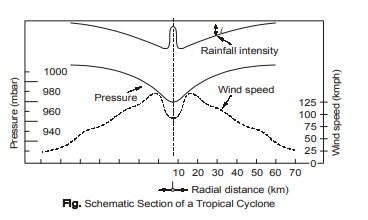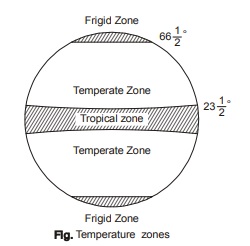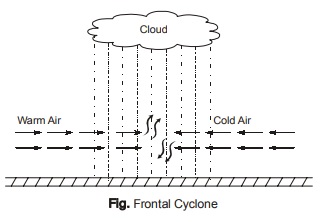Types of Cyclones
Various types cyclones are as follows:
1. Tropical Cyclone: A tropical cycle in India is called cyclone. In it, isobars are closely spaced and winds are anticlockwise in northern hemisphere. The centre of storm, known as ‘eye’, extends to about 10 – 15 km in diameter and may be relatively quiet. However, right outside the eye, very strong winds reaching to as much as 200 kmph exist.
- The wind speed gradually decreases towards the outer edge of tropical cyclone.
- Pressure increases towards outer edge of cyclone.
- These are called tropical cyclone as these occur in tropical region of world.

2. Extra Tropical Cyclone: These cyclone are formed in location outside the Tropical Zone of world. This type of cyclone posses a strong counter-clockwise wind circulation in the northern hemisphere.
- The magnitude of precipitation and wind velocities are relatively lower than those of tropical cyclone.
- The duration of precipitation is usually longer and areal extent is also larger.

3. Anti Cyclone: In such type of cyclone wind circulation is clockwise in the northern hemisphere. The weather is usually calm at the centre. Winds flow with the moderate speed.
4. Frontal Cyclone: This is also a type of cyclone but the formation of it is different. When a warm air mass and cold air mass meet under favourable conditions, as the warm air are rise up due to its less density and colder air mass due to high density settle down. The ascending warmer air cools adiabatically and form the cloud and precipitates.

Note: A front is the interface between two distinct air mass.
<< Previous | Next >>
Must Read: What is Hydrology in Civil Engineering?

